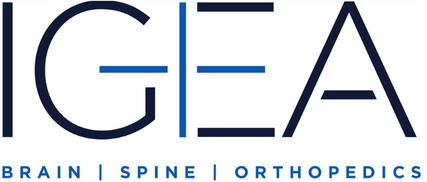MICROVASCULAR DECOMPRESSION IN
NEW JERSEY & NEW YORK
TRIGEMINAL NEURALGIA
Our specialists in New Jersey offer trigeminal neuralgia treatment, which occurs when a vessel, typically an artery, loops around or presses against the trigeminal nerve, the largest cranial nerve in the head. As the artery naturally pulsates, the nerve fibers short-circuit and fray. Sometimes, the nerve coating (myelin) can be worn away, creating high sensitivity and symptoms similar to a toothache. Luckily,
IGEA's clinics in New York and New Jersey offer microvascular decompression that can be used to treat trigeminal neuralgia.
ABOUT TRIGEMINAL NEURALGIA
Typically, trigeminal neuralgia is described as a sudden, electric shock-like pain on one side of the face, most commonly in the cheek and/or jaw. Symptoms of this condition can also be felt in the forehead or teeth, which is why it can be confused as a toothache. Frequently, triggers are common occurrences like brushing one’s teeth, exposure to the wind, or even face-washing.
Causes for trigeminal neuralgia include:
- Aging, with the condition being most common in adults over 50
- Multiple sclerosis
- Brain tumor
- Stroke
- Trauma
This condition is classified into two main types, both of which our award-winning medical team is highly trained to diagnose and treat. These include:
- TN1: Patients experience the sudden onset of pain that can last from seconds to hours.
- TN2: Pain is constant.
NEW YORK AND NEW JERSEY TRIGEMINAL NEURALGIA TREATMENT WITH MICROVASCULAR DECOMPRESSION
If daily life is affected by trigeminal neuralgia, then microvascular decompression may be the right course of treatment. Effective for other cranial nerve diagnoses as well, this procedure is minimally invasive and performed under general anesthesia. Our microvascular decompression surgery in New York and New Jersey follows these steps:
- A small portion of the skull is removed behind the ear.
- Our surgeons navigate a camera toward the nerve.
- The blood vessel is then separated from the nerve by covering the nerve with Teflon, or moving the artery to a different location.
- Thin titanium mesh is then placed over the opening as a secure cover.
After the procedure, patients typically stay in the hospital for one to two days. Certain side effects, such as nausea or headaches, are normal and can often be controlled with medication. During recovery, you’ll also be instructed to work on your activity levels, including walking or sitting up and down. To learn more about what to expect from our microvascular decompression treatments for trigeminal neuralgia in New Jersey and New York, read some of our patients’ success stories.
ENJOY A HIGHER QUALITY OF LIFE WITH IGEA BRAIN, SPINE & ORTHOPEDICS
Microvascular decompression is shown to offer long-term relief from trigeminal neuralgia, with a low rate of post-surgical facial numbness and little risk of pain relapse. While trigeminal neuralgia is not life-threatening, it certainly interferes with a patient’s quality of life, which is where IGEA Brain, Spine & Orthopedics comes in. Serving patients from across the tri-state area, our physicians in the New York and New Jersey area are well-trained in microvascular decompression and other advanced treatments for complex cranial, spinal, neurovascular, neurological, orthopedic, and neuropsychological conditions. For more information, contact us in New Jersey or New York today or call 866-467-1770.

